This post may contain affiliate links. Read our disclosure policy.
If you’ve been following me for a while, you’ve probably seen me talk about the CORRECT way of how to measure flour at one time or another.
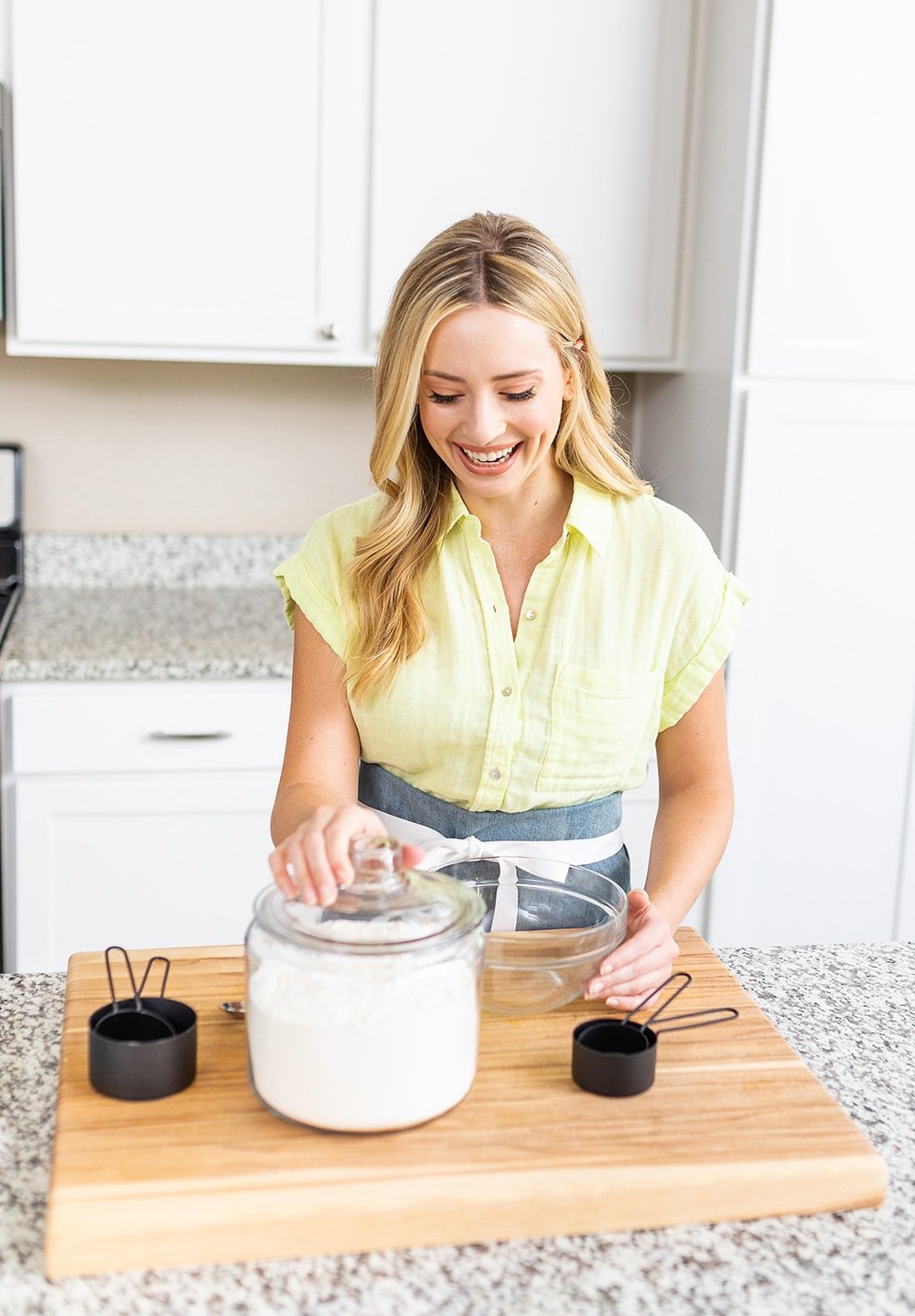
How you measure your baking ingredients can make or break your success in the kitchen.
It’s actually kind of crazy just how critical this one step can be! I see SO many frustrated comments and messages from you guys asking what could have went wrong when a recipe doesn’t turn out. I would venture to say at least 50% of the time (probably more) it’s due to measurement issues.
The easiest ingredient to mis-measure is flour. That’s because it can be so easily compacted into a container or measuring cup without you even realizing.
Basically, it’s all too easy to accidentally add more flour than the recipe actually calls for. You can also mis-measure other ingredients, but flour is the most common and most damaging if measured wrong. This can yield baking results that are:
- Dry (instead of moist)
- Dense (instead of light and fluffy)
- Crumbly (instead of moist, chewy, or fudgy)
- Tough (instead of tender)
- Rubbery (instead of delicate)
AKA… results that no one wants!
Luckily with a few simple tricks it’s easy to improve your baking by learning how to measure your flour accurately. I’ve laid it all out in the video and instructions below. If you follow these guidelines EACH time you bake a recipe, you’ll see much more consistent results.

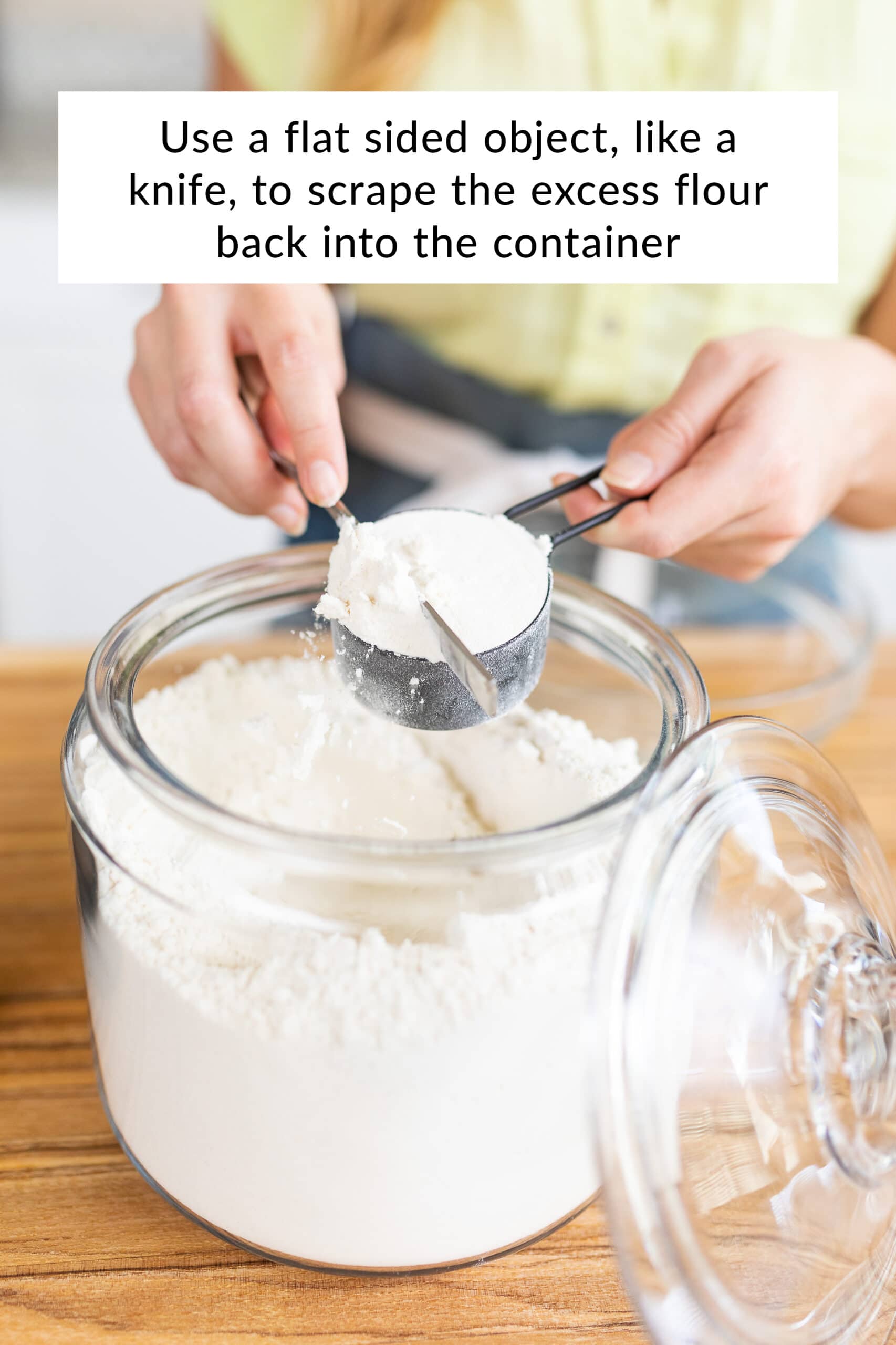
How to Measure Flour
Why is it important to measure flour correctly?
Here’s a visual example. The cookie on the left was made by measuring flour with a scale, the one on the right was made with a compacted cup of flour. Those cookies ended up being dry and tough, and hardly spread out:
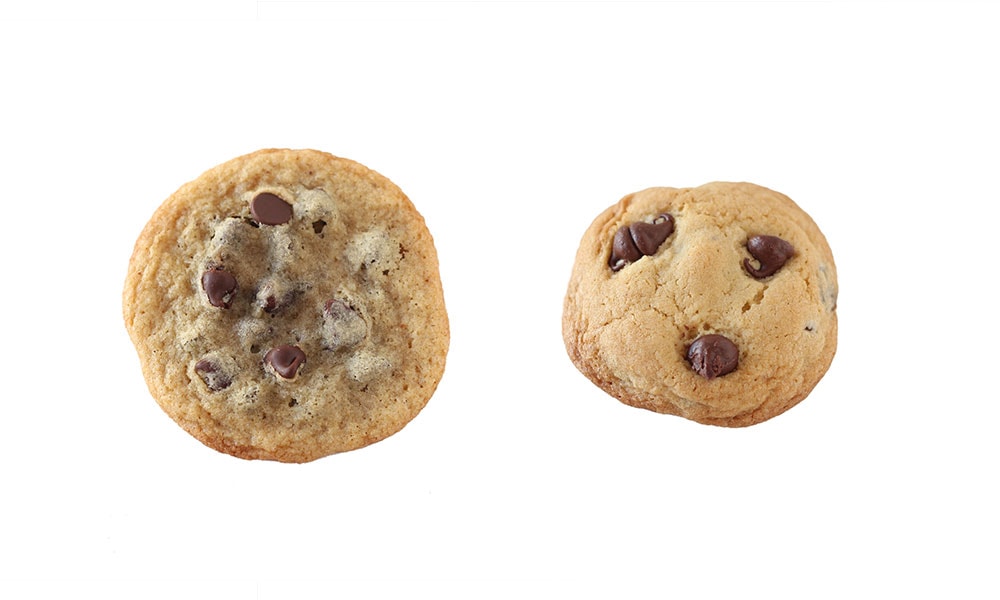
Do you measure flour before or after sifting?
Whether to measure flour before or after sifting depends on how the ingredient is called for in the recipe. For example, if the recipe calls for “1 cup flour, sifted,” measure the flour first and then sift. If a recipe calls for “1 cup sifted flour,” sift the flour first, then measure.
Fluff Your Flour!
The first step to measuring flour is to fluff up your flour in its container or bag. Simply take a spoon or fork and fluff the flour around inside to loosen it up.
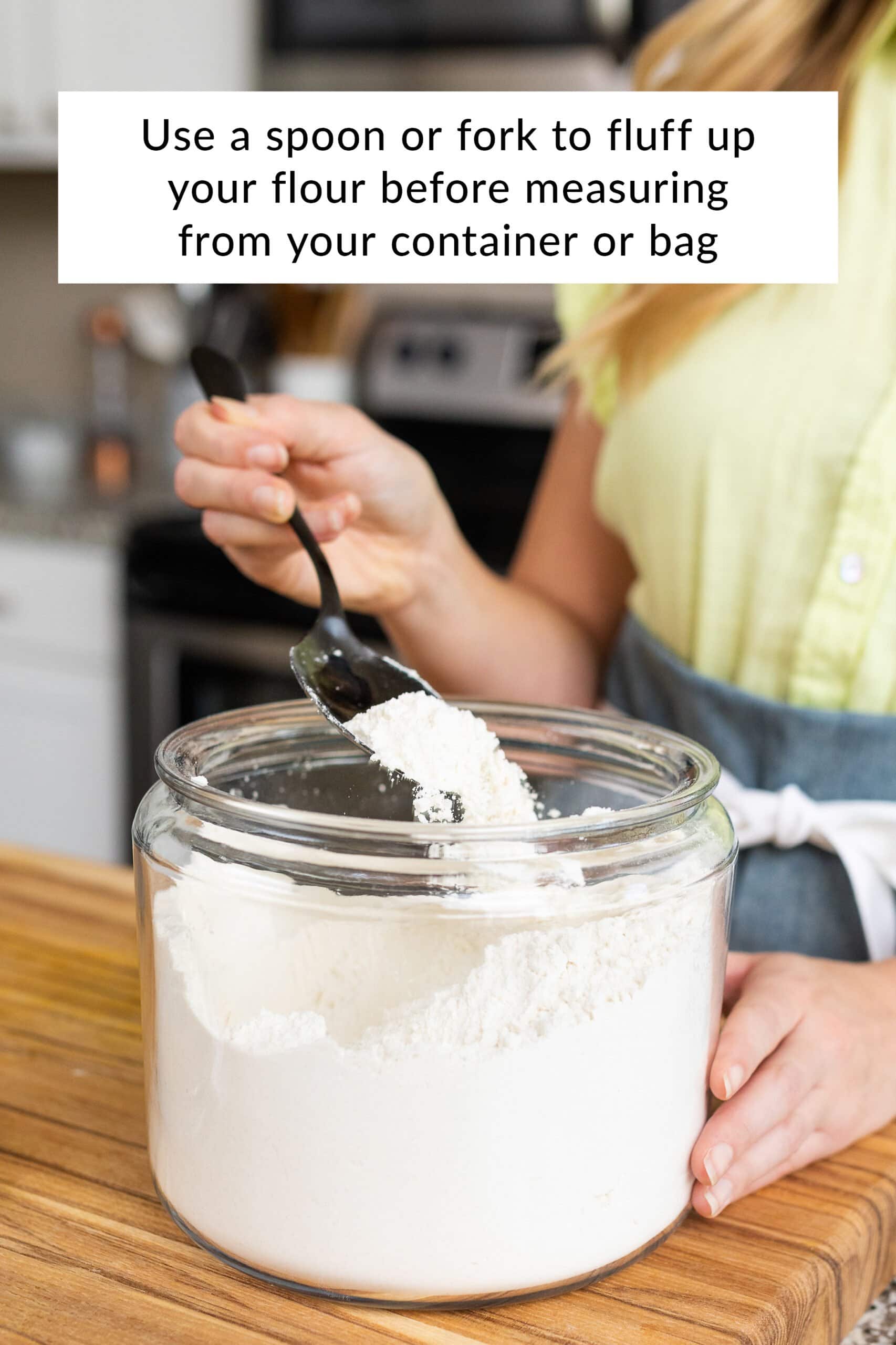
Measuring with a Scale
This is by far the BEST and simplest way to improve your baking instantly. This is my favorite scale by OXO. This one is a cheaper alternative I also like.
Measuring with a scale gives you 100% accuracy. It also dirties less dishes because you aren’t using a bunch of measuring cups. Simply press the zero / tare button to return the weight to zero before adding each new ingredient. The video above demonstrates this fully.
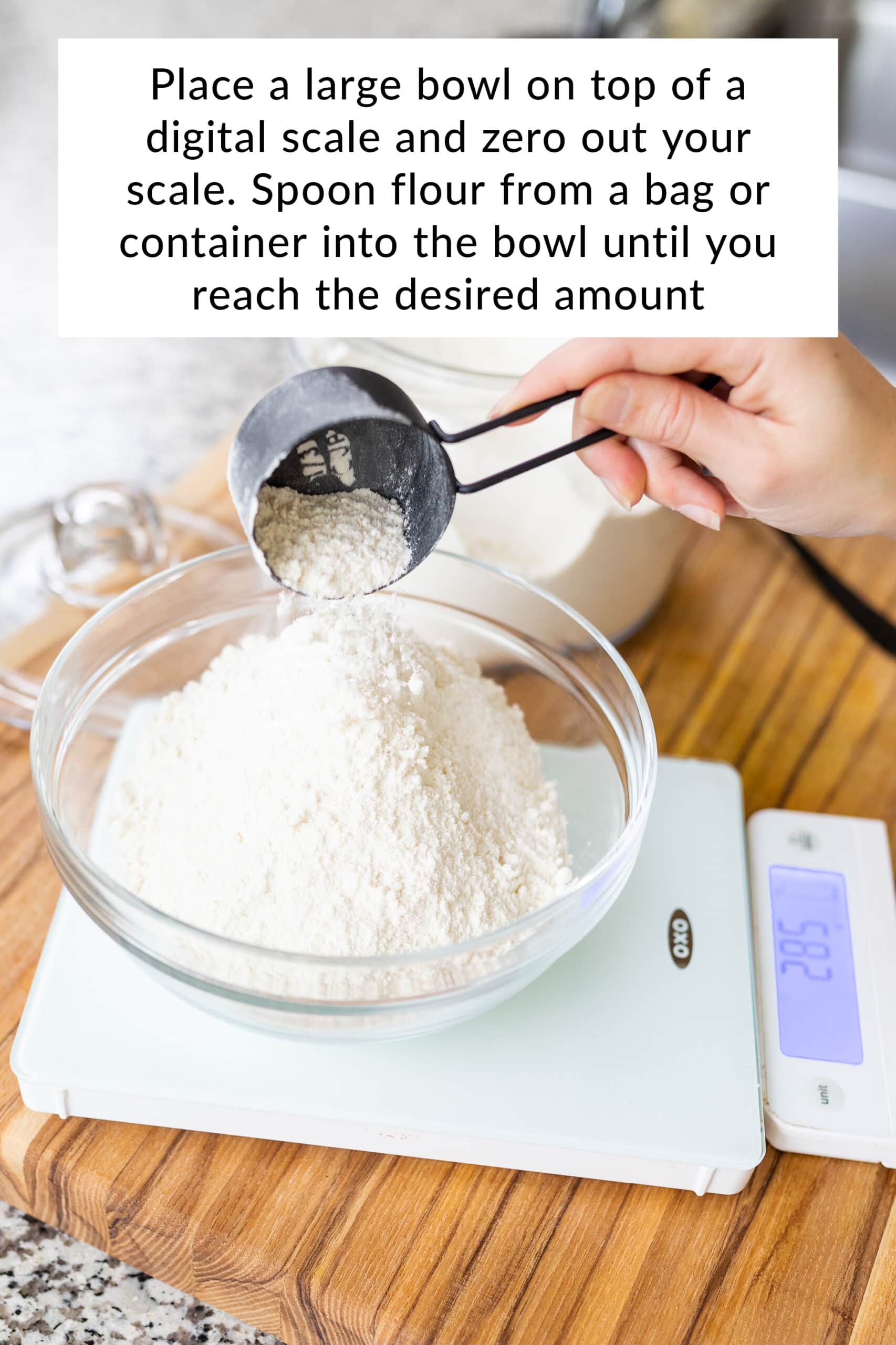
Use my free measuring chart so you know how much 1 cup each basic baking ingredient weighs. Click here to download the chart.
Important note!
1 cup of every ingredient will NOT weigh 8 ounces. That’s because different ingredients have different densities.
If that’s confusing, think of it like this: 1 cup of rocks would not weigh the same as 1 cup of feathers. That might be an extreme example, but as you’ll see once you download the chart, every ingredient has a sightly different density.
The majority of my baking recipes here on Handle the Heat include weight measurements in grams. I find grams to be the easiest unit to work with. Use the chart if you’re unsure of how much an ingredient weighs, or if you’re following a recipe that doesn’t offer weight measurements.
This chart is actually an abbreviated version to get you started. There’s a larger one with more ingredient measurements within the Magic of Baking online class. There’s actually a TON more info about measuring and flour specifically in the class!
Spoon & Level Method
If you don’t have a kitchen scale, this is the second best way to measure flour. This method helps to ensure you don’t accidentally compact too much flour into your measuring cup.
For this method, you’ll place a spoon into a flour container or bag, scoop the flour into your measuring cup until you have a tall mound, then use a knife or sharp object to level off the excess flour. Step by step photos below.
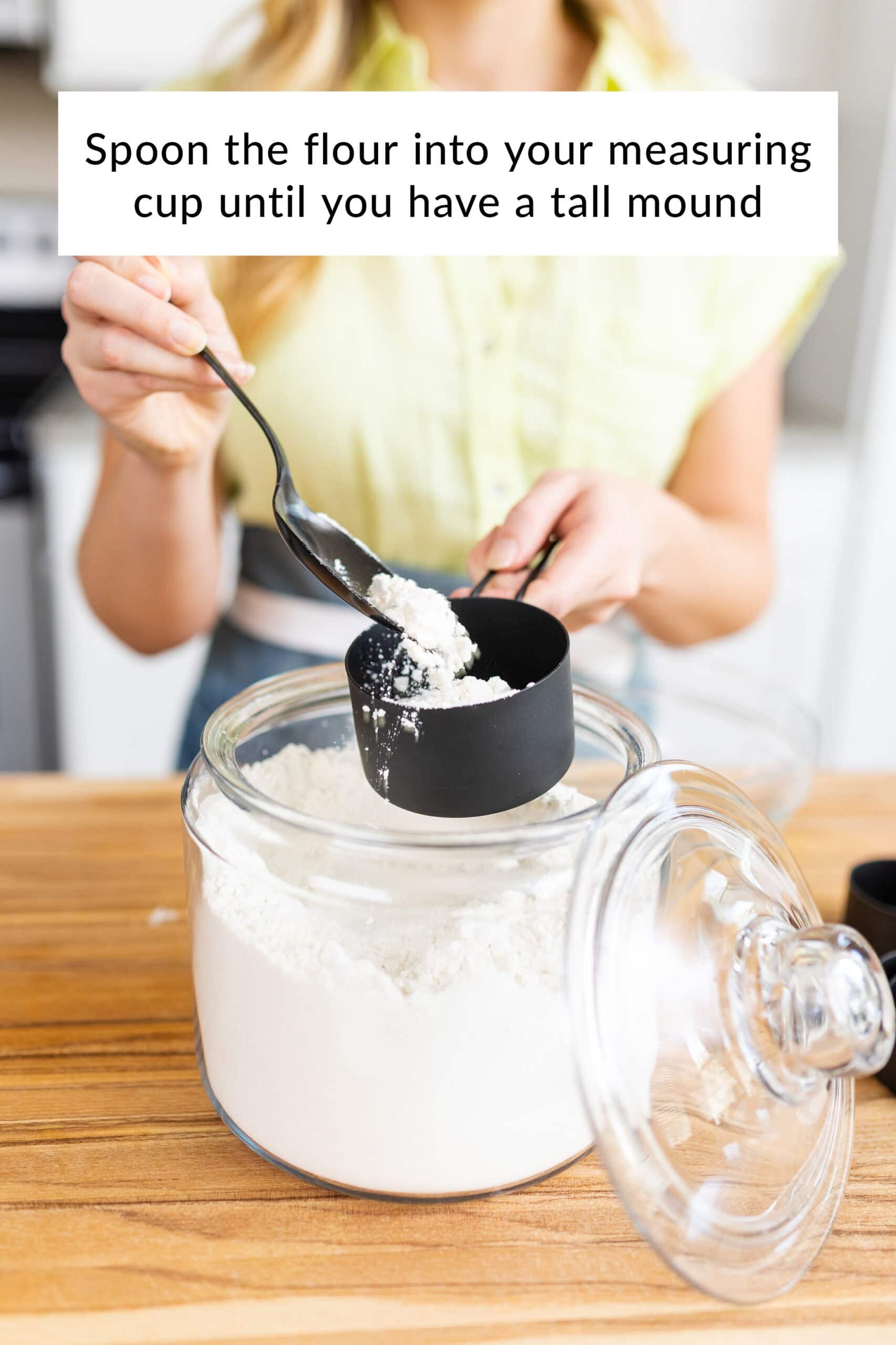
Important note!
Do NOT place a measuring cup directly into your flour bag or container as you will pack in too much flour.
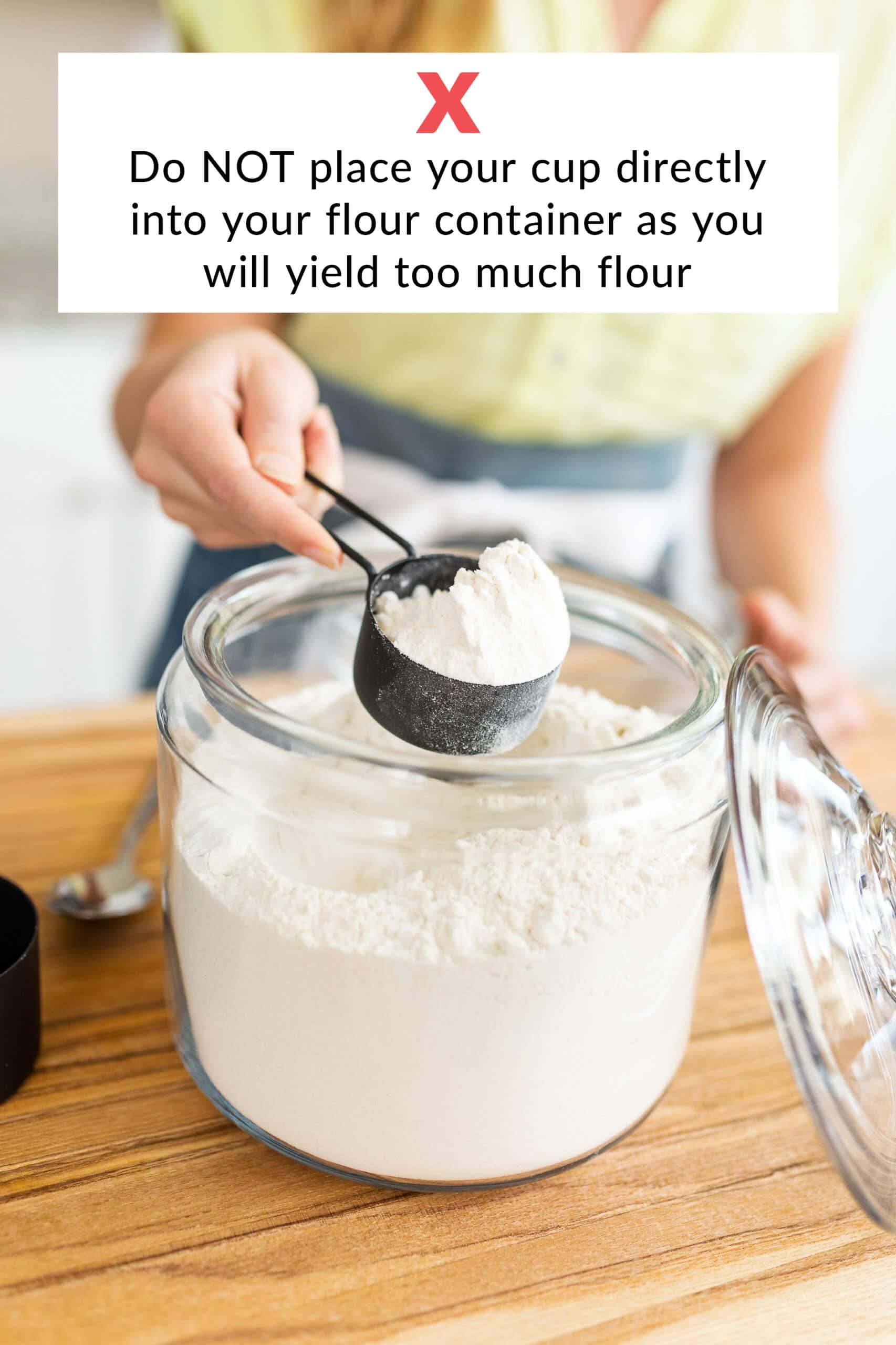
How to Measure Flour with a Scale:
- Use a spoon or fork to fluff up your flour before measuring from your bag or container. Flour easily settles and compacts into its container, which can make it easy to add too much to your recipe.
- Place a large bowl on top of a digital scale. Press the zero / tare button on the scale to return the weight to zero before weighing your flour.
- Spoon flour from a bag or container into the bowl until you reach the desired amount.
How to Measure Flour with the Spoon & Level Method:
- Use a spoon or fork to fluff up your flour before measuring from your bag or container.
- Spoon the flour into your measuring cup until you have a tall mound. Do NOT place a measuring cup directly into your flour bag or container as you will yield too much flour.
- Use a flat sided object, like a knife, to scrape the excess flour back into the container.
Recipes You’ll Love:
Now that you’ve learned one of the most critical how-to’s for baking, make sure to check out some of my top recipes!
More science of baking articles:
Photos by Lauren Peachie.

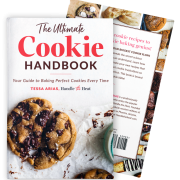
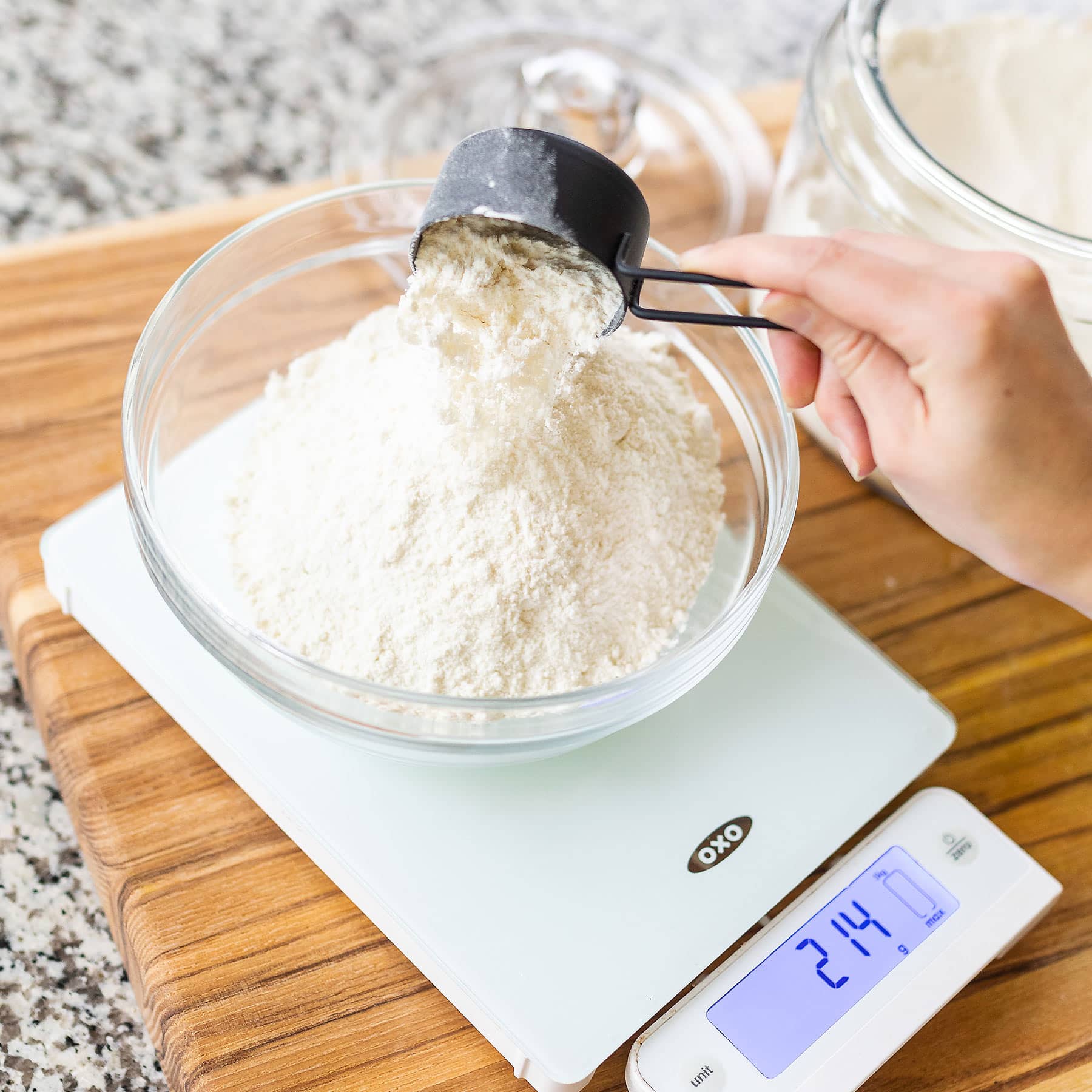
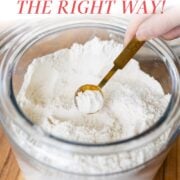
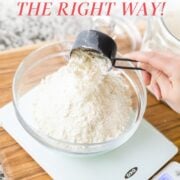
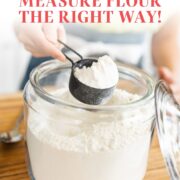

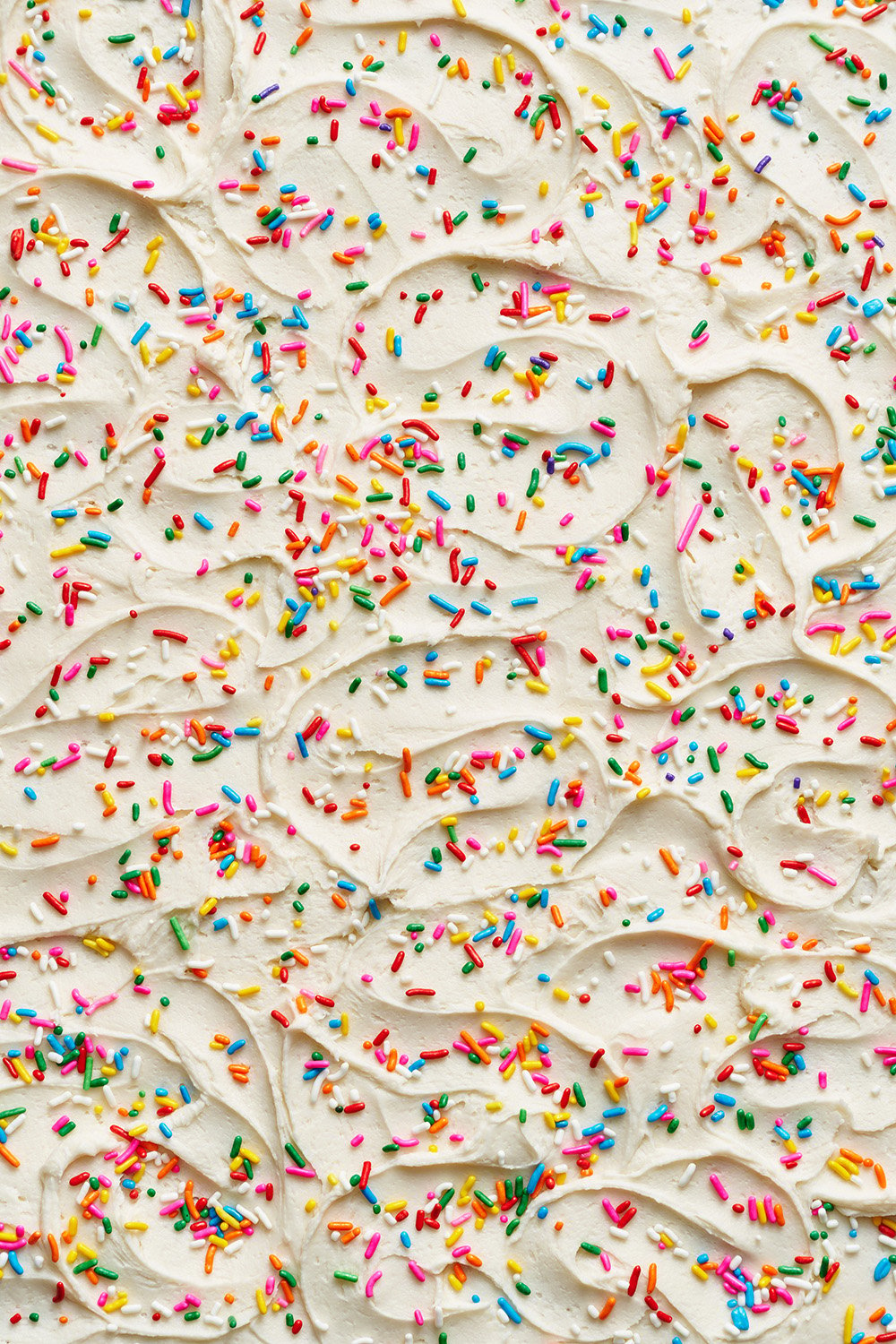
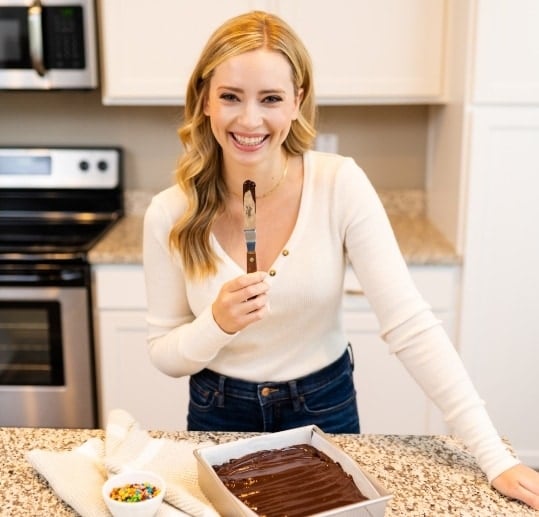
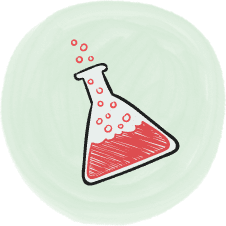
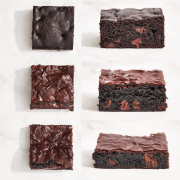
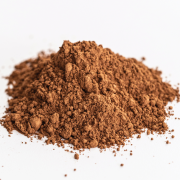
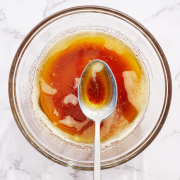
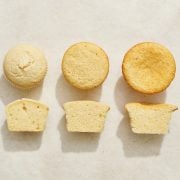
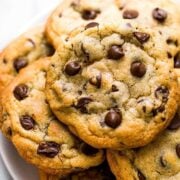
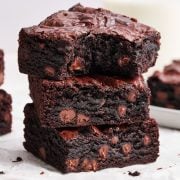
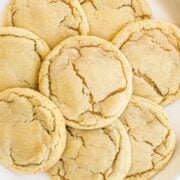
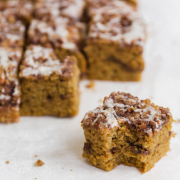








Hi Tessa,
I’m curious why one would need to fluff their flour before measuring if they’re measuring it with a digital scale? Doesn’t this negate the step of fluffing as it’s a pure measurement regardless of how it’s scooped into the bowl? I always measure by scale but do not fluff. Please advise.
Thanks,
Kara
Hi Kara! Fluffing the flour up simply helps to loosen it up in the container so it’s not so compacted and you’re not scooping up packed flour. You’re welcome to do so with a digital scale (though not necessary), but it’s most important for the Spoon & Level Method 🙂
Thanks! I’ve always just put the measuring cup in the flour. I’ve recently started weighing but I’m visiting family and don’t have one handy.
Hi Tessa! If the weight of my flour is significantly heavier than your measurement of 127 grams/cup, should you go with the 127 or go with the weight measurements on the bag of flour? My flour (wheat Montana Unbleached All-Purpose flour) says a cup of flour is 152 grams/cup. So would I need to add more to your recipes or should I stick to the 127 grams? Thank you! I have been loving learning the science behind baking!
Hi Holly! We always suggest using the weight provided by the recipe you’re following regardless of the brand; otherwise, it can alter the outcome of the recipe. Be sure to use a digital scale to ensure accurate results! So happy you’re enjoying all of our science behind baking articles! You might be interested in signing up for our free Ingredient Measuring Guide to help out for future baking 🙂 Hope that helps! Feel free to reach out with further questions!
I Tesa. My name is Gonzalo Herrera.
It has been a pleasure to know about your recipes and take all your advices and lesson to bake as a professional.
I have a restaurant and inside there is a cafe where I sell some cakes.
One of the most sold is the chocolate one I learned from you
This week I learned how to make Nutella brownie and it as wonderful. Next week I will launch.
Thanks for all.
Making brownies, wondering why my brownies always falls?
I am unable to download the free measuring chart. I have followed the instructions provided. Unfortunately, I do not receive an email from you to complete the confirmation. I would really like to get the information provided in the download. Is there anyway you could supply this to me. Thanks.
Hi Donna! I can see on my end that the email has been successfully sent to you! Did you check your spam? Haley just let me know she got your email this morning and will be sending you a direct link just to be safe 🙂
Hi, for your muffins tips request overnight fridge may I know when taken out from fridge and bake immediately does it need more time to bake?
Those instructions are covered in this blog post: https://handletheheat.com/how-to-bake-tall-bakery-style-muffins/. Enjoy!
When do you need to actually sift the flour?
I only sift flour when the recipe specifically calls for it! I do recommend always sifting cake flour, though. Hope that helps!
Do you fluff the flour before you measure to weigh flour
You said to “fluff up” the bag or canister of flour. I have not heard that term before, & am wondering how to accomplish fluffing up my flour.
Thank you so much for this! I’ve tried to figure out why all of my cookies turn out to be little puff balls instead of nice flat cookies. Now I know!
Isn’t it crazy how much of a difference flour makes?! So glad you found this article helpful.
You say to keep butter at 67 degrees for cookies but some recipes call for soft butter. That’s hard to get soft butter at 67 degrees. What do you suggest?
I definetly feel like I have issues with 67 degrees still being to hard to mix in. It doesn’t get creamy…instead I get hard chunks that don’t incorporate into dough very well. I don’t know if using a stand mixer vs a hand mixer would make a difference. I use a hand mixer.